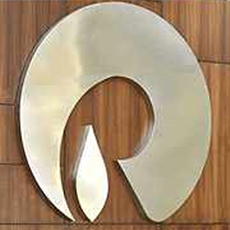 An unimpressive performance on its exploration and production front has brought the refining and marketing and petrochemicals business back in the reckoning for Reliance Industries Ltd, India's highest valued company.
An unimpressive performance on its exploration and production front has brought the refining and marketing and petrochemicals business back in the reckoning for Reliance Industries Ltd, India's highest valued company.
Over the quarters, a sharp decline in production from its flagship Krishna-Godavari basin, off the Andhra coast, has changed the business mix for the Mukesh Ambani-led company, with refining and marketing now contributing 78.2 per cent of the revenue base and 58 per cent of Ebit (earnings before interest, tax) margins.
During the October-December quarter, RIL reported Ebit margin of Rs 3,615 crore from refining and marketing against Rs 1,685 crore (Rs 16.85 billion) during the corresponding previous quarter, an increase of 115 per cent.
Ebit margins are measures of a company's operating profitability.
The Ebit margin from oil and gas, on the other hand, is down more than half at 54 per cent to Rs 590 crore (Rs 5.9 billion) against Rs 1,294 crore (Rs 12.94 billion) in the corresponding previous quarter.
The petrochemicals segment contributed 31 per cent of Ebit margins and 20 per cent of revenues at Rs 1,937 crore (rs 19.37 billion) against Rs 2,157 crore (Rs 21.57 billion) a year ago.
Chairman Mukesh Ambani last week said RIL was investing over Rs 1 lakh crore (Rs 1 trillion) by expanding its petrochemical capacities and adding value to its refining business.
"These investments will secure a significant change in RIL's earning capacity on commissioning of these projects," he said.
Riding on high refining margins, last week, RIL reported its third straight quarterly net profit increase, at Rs 5,502 crore (Rs 55.02 billion).
Its gross refining margin, at $9.6 per barrel, jumped 41 per cent compared with the third quarter of 2011-12.
GRM is the difference between crude oil price and total value of petroleum products produced by a refinery.
"After spending billions on exploration and production, RIL
"And, for the next few quarters to come, we see refining and petrochemicals driving its business," said the assistant vice-president of a domestic broking firm, requesting anonymity.
RIL owns and operates two state-of-the-art refineries at Jamnagar, Gujarat.
These refineries can together process around 1.24 million barrels of crude oil every day, giving RIL the advantage of processing heavier grades of crude, which come cheaper.
"RIL has realised it needs to focus on refining and petchem, given production from its KG block continues to decline.
"It was only two years ago when RIL reached its peak in gas production from the KG-D6 block, with Ebit margins from oil and gas at its best 32 per cent," said a senior analyst from a domestic broking firm, who also did not want to be named.
During the first quarter of 2010-11, RIL's average gas production from KG-D6 was 60 million standard cubic metres (mscmd) per day.
RIL produced a total of 22.04 mscmd of gas from the Dhirubhai-1 and 3 gas fields and MA oil and gas field in the KG-D6 block in the week ended December 30, 2012.
Analysts said it would take another two-three years for RIL to stem the production decline from KG-D6 and an upside could not be expected before 2016-17.
"Even if there is optimism about gas price increase, only an increase in production can bring in the real change for RIL," said an analyst.
Petchem, which has been giving away its share in revenue to refining for the past three years, will see an uptake in the coming quarters, with RIL investing over $12 billion (Rs 64,500 crore today) over the next four-to-five years in refining and petrochemical business.
In addition to setting up a $4-billion petroleum coke gasification project, which will produce synthetic natural gas, RIL is also spending $8 billion on adding capacities of PFY, PET, polyester and intermediate chemicals such as PTA and paraxylene, besides adding new products such as carbon black and rubber.









